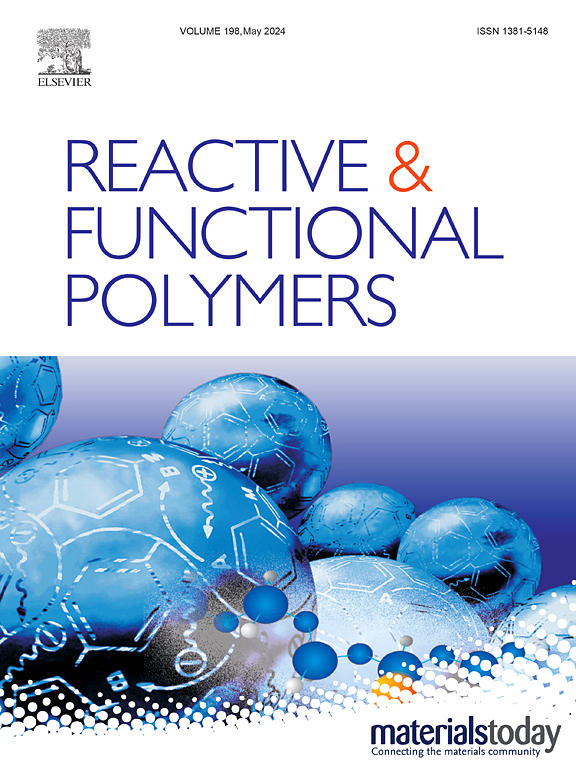Fully biomass reprocessable thermoset plastics based on acetals dynamic covalent bonds
IF 4.5
3区 工程技术
Q1 CHEMISTRY, APPLIED
引用次数: 0
Abstract
The introduction of dynamic covalent bond into thermoset polymer networks to construct covalent adaptable networks (CANs) can endow thermoset materials with plasticity through the rearrangement of network driven by their reversible bond exchange under specific stimuli. In this study, we constructed cellulose CANs based on dynamic covalent bond of acetals and hemiacetals (ACCs) using dialdehyde starch (DAS) as the cross-linker for hydroxypropyl cellulose (HPC). The constitutive relationships of crosslinking density and crosslinker structure on the thermal and mechanical properties of ACCs were investigated by adjusting the addition ratio of crosslinker and the degree of oxidation of the crosslinker. In addition, the dynamic response properties of ACCs including stress relaxation, creep, remodelling and welding are also studied. We also analysed the degradation of ACCs in acid solution and the feasibility of raw material recycling. This work is expected to provide new ideas for the development of new sustainable plastics.

求助全文
约1分钟内获得全文
求助全文
来源期刊

Reactive & Functional Polymers
工程技术-高分子科学
CiteScore
8.90
自引率
5.90%
发文量
259
审稿时长
27 days
期刊介绍:
Reactive & Functional Polymers provides a forum to disseminate original ideas, concepts and developments in the science and technology of polymers with functional groups, which impart specific chemical reactivity or physical, chemical, structural, biological, and pharmacological functionality. The scope covers organic polymers, acting for instance as reagents, catalysts, templates, ion-exchangers, selective sorbents, chelating or antimicrobial agents, drug carriers, sensors, membranes, and hydrogels. This also includes reactive cross-linkable prepolymers and high-performance thermosetting polymers, natural or degradable polymers, conducting polymers, and porous polymers.
Original research articles must contain thorough molecular and material characterization data on synthesis of the above polymers in combination with their applications. Applications include but are not limited to catalysis, water or effluent treatment, separations and recovery, electronics and information storage, energy conversion, encapsulation, or adhesion.
 求助内容:
求助内容: 应助结果提醒方式:
应助结果提醒方式:


